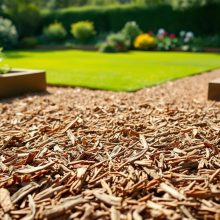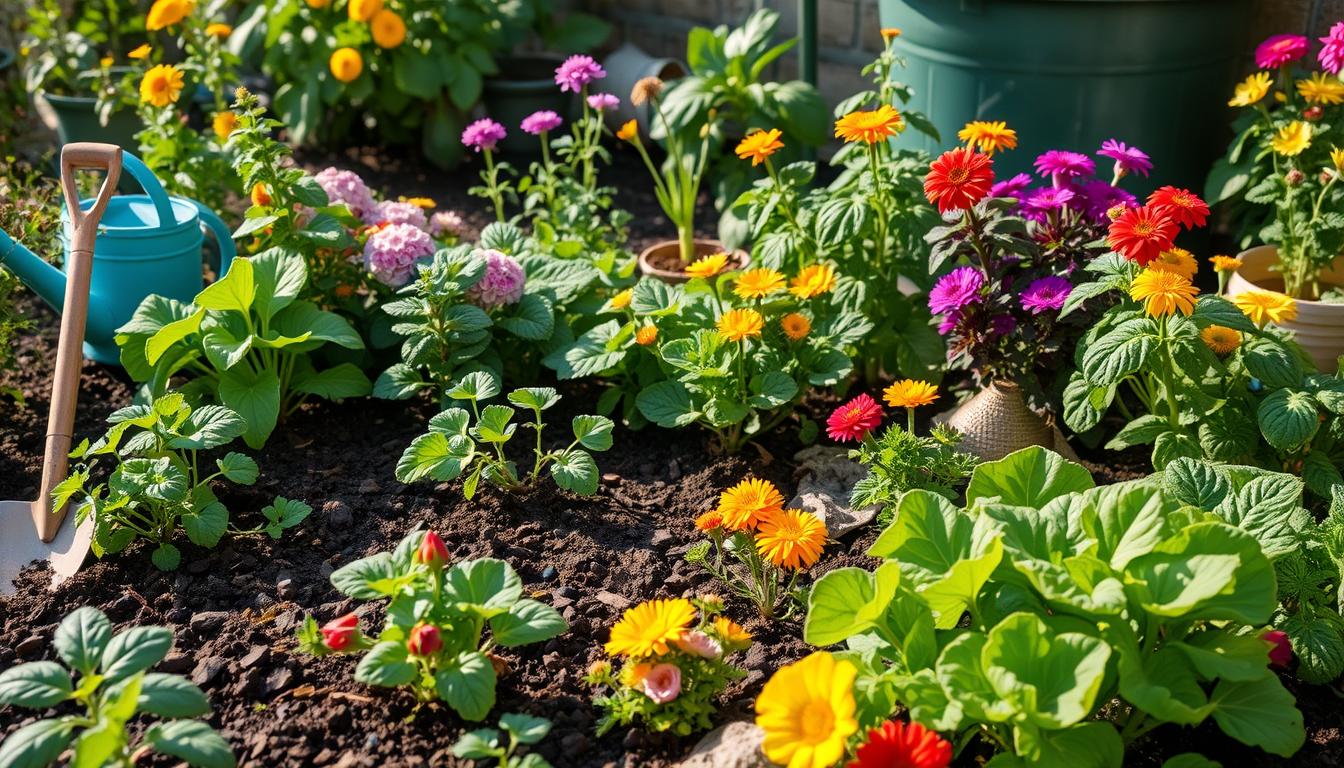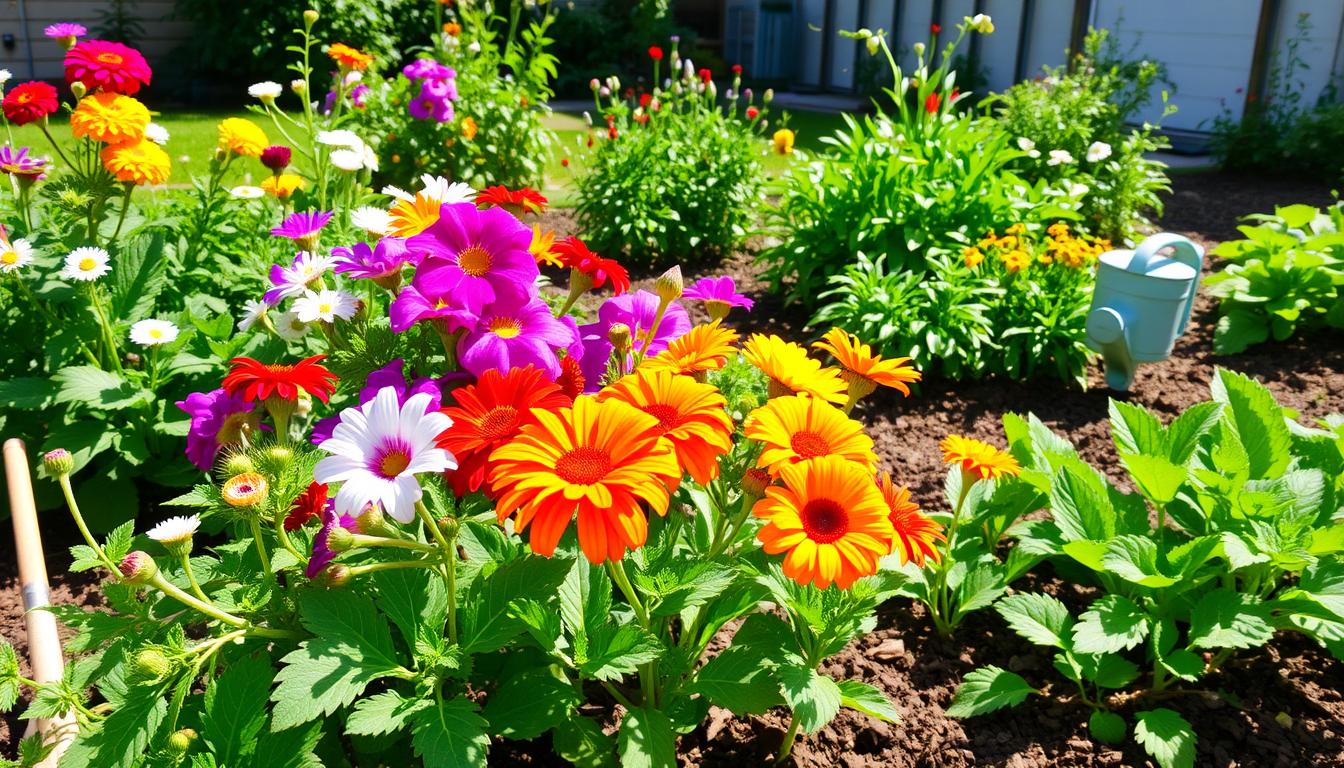Pruning Tips: Revive Your Plants with Ease

Gardening fans know that plants need more than water and sun. Pruning tips are key to keeping your garden lively and green. Learning to prune plants right can turn weak plants into strong, stunning ones.
Pruning is more than just cutting branches. It’s a smart way to care for plants, promoting growth and removing damaged parts. Knowing how to prune can greatly improve your garden’s look and health.
To keep your garden in top shape, learn when and how to prune. Whether it’s ornamental shrubs, fruit trees, or delicate perennials, mastering pruning is crucial. It helps create a more resilient and beautiful landscape.
Key Takeaways
- Pruning is essential for plant health and growth
- Different plants require specific pruning techniques
- Regular pruning prevents disease and promotes stronger plants
- Proper tools are critical for effective pruning
- Timing of pruning varies by plant type
Understanding the Importance of Pruning
Pruning is key in gardening. It boosts plant health and looks. Knowing when to prune trees and bushes is crucial for a healthy garden.
Plants need careful care to grow well. Pruning removes bad parts, helping plants grow strong. It also stops diseases from spreading.
Benefits of Regular Pruning
- Improves air circulation around plants
- Stimulates new growth and branching
- Enhances plant shape and aesthetic appeal
- Removes potential safety hazards from weak branches
- Increases flowering and fruit production
When to Prune Your Plants
Knowing when to prune trees is important. Deciduous trees do well in winter when they’re asleep. Flowering shrubs should be trimmed after they bloom for next year’s flowers.
Fruit trees need careful pruning to grow well. Prune them in late winter or early spring. This helps them stay healthy and grow more fruit. Always use sharp tools and make clean cuts to help plants heal.
Tools You’ll Need for Pruning
Gardening starts with the right tools. Both pros and hobbyists know quality tools are key. The right pruning tools help keep plants healthy and make gardening fun.
Choosing the right tools is crucial. Each plant and branch needs specific shears for clean cuts. This promotes health and makes gardening easier.
Essential Pruning Tools for Every Gardener
- Hand pruning shears for small branches and delicate plants
- Loppers for medium-sized branches up to 2 inches thick
- Pruning saws for larger, thicker branches
- Hedge trimmers for uniform shrub maintenance
- Pole pruners for hard-to-reach branches
Safety Gear for Responsible Pruning
- Protective gardening gloves
- Safety glasses or goggles
- Long-sleeved shirts
- Sturdy closed-toe shoes
- Hard hat for overhead pruning
Invest in durable pruning tools that last. Clean and sharpen your shears often. This keeps them working well and extends their life.
Different Pruning Techniques Explained
Pruning is key for keeping plants healthy and looking good. Tree pruning techniques are vital in plant care. They help gardeners shape and care for their gardens. Learning about different cutting methods can change how your garden looks and how well plants grow.
Professional gardeners use many pruning methods to get different results. Knowing when and how to use these techniques can greatly improve plant growth and look.
Thinning vs. Heading Cuts
Pruning experts know two main cutting techniques for tree branches:
- Thinning cuts: Remove entire branches to improve air circulation and light penetration
- Heading cuts: Trim branches back to a bud to encourage bushier growth
Thinning cuts reduce branch density. Heading cuts encourage new growth and control plant shape.
Deadheading Flowers for Better Blooms
Deadheading is a simple yet effective pruning technique. It encourages more flowers. By removing spent blossoms, gardeners help plants focus on making new flowers instead of seeds.
Rejuvenation Pruning for Older Plants
Older plants often need a lot of pruning. Rejuvenation pruning cuts back severely to stimulate new growth. This method is best for shrubs and some perennial plants. It helps them regain energy and a compact shape.
Learning these pruning techniques will help you keep your plants healthy and attractive in your garden.
Best Practices for Pruning Trees
Pruning trees is key to keeping them healthy and looking good. Knowing the right pruning techniques is crucial. It affects how well your tree grows and stays healthy.
Each stage of a tree’s life needs its own pruning method. The best time to prune depends on the tree’s age and type. So, it’s important to learn the right pruning strategies.
How to Prune Young Trees
Young trees need careful pruning to grow strong. Early pruning helps in several ways:
- A central leader branch
- Balanced branch distribution
- Removal of competing or weak branches
Make sure to create a clear central branch. Remove any branches that rub or cross. Prune cuts should be close to the trunk, avoiding damage to the branch collar.
Techniques for Mature Trees
Mature trees need different pruning methods than young ones. Important steps include:
- Removing dead or diseased branches
- Thinning dense canopies for better air circulation
- Maintaining the tree’s natural shape
Arborists suggest pruning mature trees in late winter or early spring. This time helps the tree heal faster and reduces stress.
Pruning Shrubs: A Step-by-Step Guide
Learning to prune shrubs well means knowing each plant’s needs. Different shrubs need different care to stay healthy and look good. Knowing when to trim bushes is key to a beautiful garden.
Good shrub care starts with the right timing and method. The best way to prune depends on the shrub type and how it grows. Some shrubs do best with early spring pruning, while others need late winter trimming.
Essential Timing for Shrub Pruning
- Spring-flowering shrubs: Prune right after they bloom
- Summer-flowering shrubs: Trim in late winter or early spring
- Evergreen shrubs: Prune in early spring before new growth starts
Step-by-Step Pruning Process
- Look for dead, damaged, or crossing branches
- Use sharp, clean tools for precise cuts
- Cut at a 45-degree angle above a leaf node
- Remove no more than 25-30% of the shrub’s growth
After pruning, it’s important to care for the shrub. Water it well and use a balanced fertilizer for new growth. Watch the shrub for stress or disease signs in the weeks after pruning.
Pruning Perennials for Healthy Growth
Perennial plants are key to a beautiful garden. They bring color and texture year after year. Learning how to prune them right can make them even more vibrant and healthy.
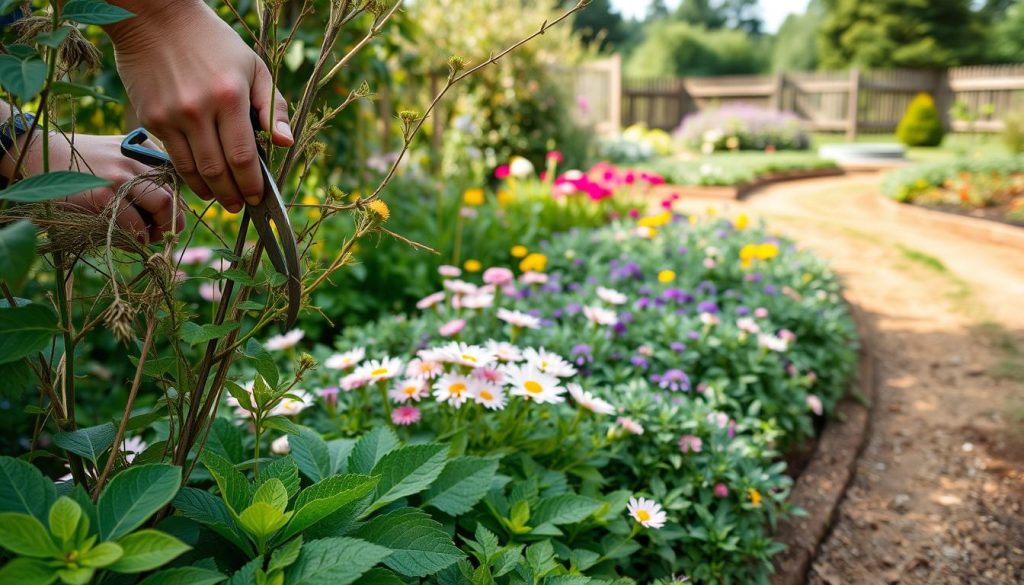
Pruning perennials right is all about knowing when and how. Each plant has its own needs based on how it grows and blooms.
Identifying When to Prune Perennials
Timing is everything when pruning perennials. Look for these signs that your plants need a trim:
- Overgrown or leggy stems
- Reduced flowering
- Dead or damaged foliage
- Dense center with minimal growth
Season-Specific Pruning Tips
Each season brings its own pruning needs:
- Spring: Remove winter-damaged growth and prepare plants for new season
- Summer: Deadhead spent flowers to encourage continued blooming
- Fall: Cut back perennials after first frost to maintain garden structure
- Winter: Minimal pruning, focus on plant protection
By using these pruning tips, gardeners can keep their perennials healthy and vibrant. This ensures they look great all season long.
Caring for Your Garden After Pruning
After pruning your plants, it’s important to take good care of them. Pruning tips say that the recovery period is key for plant health. Giving your plants the right care during this time will help them grow stronger and more vibrant.
Plants need special care after pruning to heal and grow. They need the right amount of water and nutrients to recover from pruning stress.
Watering Tips Post-Pruning
Learning how to prune plants means knowing how to water them after. Different plants need different amounts of water after trimming:
- Reduce watering frequency for recently pruned plants
- Check soil moisture before watering
- Use room temperature water
- Water at the base of the plant to avoid leaf damage
Fertilizing After Pruning
Fertilizing properly supports new growth and helps plants recover from pruning. Here are some tips for fertilizing:
- Wait 2-4 weeks after pruning before applying fertilizer
- Use a balanced, low-nitrogen fertilizer
- Apply fertilizer sparingly to avoid overwhelming healing plants
- Monitor plant response and adjust nutrients as needed
Good post-pruning care keeps your garden healthy and ready to thrive in the future.
Pruning Houseplants for Longevity
Indoor plants are delicate and need careful attention. Pruning tips help keep them healthy and looking good. It’s important to know how to prune plants right for their long life and beauty.
Houseplants grow differently indoors than outdoors. Pruning helps control their size, removes damaged parts, and encourages new growth.
Signs Your Houseplants Need Pruning
- Leggy or stretched-out stems
- Yellowing or brown leaves
- Overcrowded plant structure
- Reduced leaf density
- Visible dead or damaged branches
What to Avoid When Pruning Indoor Plants
Pruning needs precision and knowledge. Here are key tips to remember:
- Never remove more than 25% of the plant at once
- Use clean, sharp pruning tools
- Avoid pruning during flowering or dormant periods
- Cut at proper angles near leaf nodes
- Sterilize cutting tools between different plants
Each houseplant needs its own pruning method. Succulents, tropical plants, and flowering plants all need special care. Always check your plant type before pruning to ensure it grows well and stays healthy.
Common Mistakes to Avoid When Pruning
Pruning is a key skill in gardening that needs attention and knowledge. Many gardeners unknowingly harm their plants by making mistakes while pruning. Knowing these common errors can help protect your plants and encourage healthy growth.
Plant lovers often struggle with pruning techniques that can harm their plants. Successful pruning requires a thoughtful approach and understanding each plant’s needs.
Recognizing Over-Pruning Dangers
Over-pruning is a big risk for many gardeners. It can stress plants and hurt their ability to make energy through photosynthesis. Tree pruning techniques need careful thought on how much to remove.
- Remove no more than 25% of a plant’s total foliage in one season
- Avoid cutting large branches without proper technique
- Learn each plant’s specific growth patterns
Understanding Plant-Specific Requirements
Different plants have unique pruning needs that gardeners must respect. Pruning tips vary a lot between species. It’s important to research each plant’s specific needs before pruning.
- Research your specific plant species
- Understand seasonal pruning windows
- Use clean, sharp pruning tools
- Make precise, angled cuts
By avoiding these common pruning mistakes, gardeners can keep their plants healthy and vibrant. Patience and careful observation are essential for mastering pruning techniques.
How to Make Pruning a Routine
Creating a regular pruning routine is key to keeping your garden healthy and beautiful all year. It’s important to know the best pruning tips to keep your garden looking great. By planning your plant care, your garden will flourish with little effort.
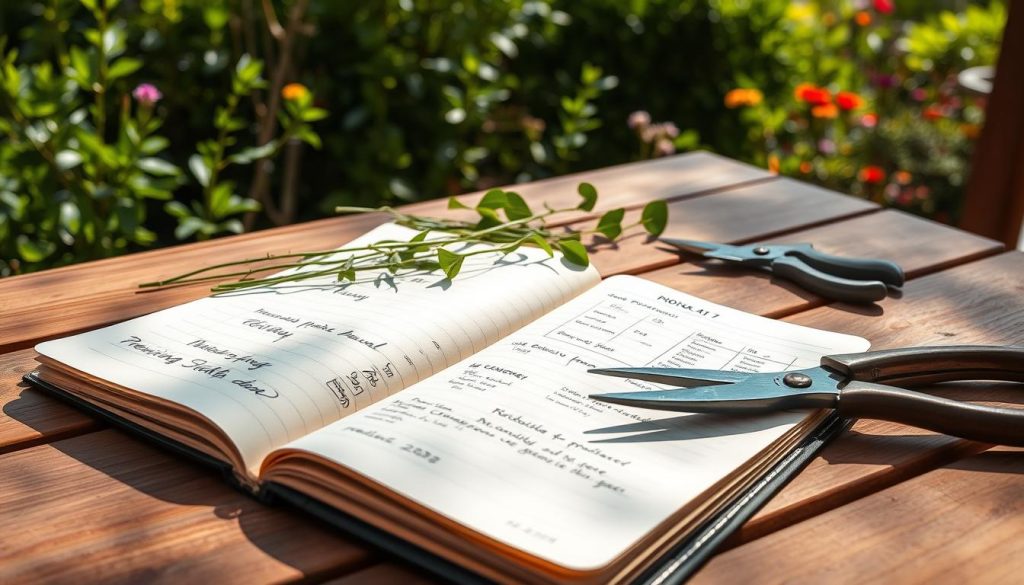
Setting up a regular pruning schedule needs careful planning and attention. When deciding when to trim bushes and other plants, remember these tips:
- Create a seasonal pruning calendar specific to your plant types
- Track growth patterns and plant responses
- Set reminders for different pruning tasks
- Adapt your schedule based on plant health and growth
Scheduling Regular Pruning Tasks
Timing is everything when it comes to pruning. Different plants need pruning at different times of the year. Make a pruning schedule that fits:
- Plant species and their specific growth habits
- Local climate conditions
- Seasonal growth cycles
- Plant maturity and health
Keeping a Gardening Journal
A gardening journal is a must-have for tracking your pruning and plant responses. Write down your pruning tips, including dates, techniques, and plant reactions. This journal helps you improve your pruning skills and understand your garden’s needs.
By sticking to a pruning routine and keeping detailed records, you’ll get better at garden care. Your plants will grow healthier and look more vibrant.
Environmental Considerations When Pruning
Gardeners can make pruning better for the environment. By using sustainable pruning tips, you can cut down on waste. This makes your garden healthier and greener.
Eco-Friendly Pruning Practices
Choosing the right pruning tools is key to green gardening. Tools like hand shears and pruning saws are better. They are more precise and cut down on carbon emissions compared to power tools.
- Choose hand tools over gas-powered equipment
- Clean tools between pruning different plants to prevent disease spread
- Use bypass pruners for clean, precise cuts
Reusing Pruning Waste in Your Garden
Pruning waste doesn’t have to go to the landfill. Creative gardeners can use branches and trimmings to help their garden. This also helps the environment.
- Create natural mulch from smaller branches
- Use larger branches as garden trellises or supports
- Compost disease-free plant material
- Build wildlife habitats with pruned wood
By using these eco-friendly pruning methods, gardeners can help make landscapes more sustainable. They can also keep their plants looking great and healthy.
Pruning for Aesthetic Appeal
Pruning turns gardens into stunning works of art. It’s like creating living sculptures in your yard. With the right tips, you can make your garden look amazing while keeping it healthy.
Pruning is more than just cutting branches. It’s about creating beautiful shapes that match your home. You can control how big plants grow and make your garden look better.
Pruning changes with the seasons. In winter, you see the tree’s skeleton. Spring brings new growth. Summer shows off green leaves. Autumn adds vibrant colors. This makes your garden a moving picture that changes with the seasons.
Designing Your Landscape with Pruning
Pruning is a creative way to design your garden. It lets you shape plants to fit your style. With careful pruning, you can make your garden interesting and keep it looking good.
Pruning for Seasonal Colors and Textures
Every season is a chance to show off your garden’s beauty. By pruning, you can reveal colorful bark and promote flowers. This makes your garden a dynamic display that changes with the seasons.

